Medusa Mushroom
This really tasty Agaric is still considered rare in most books but it seems to have become more common in the UK over the last few years. It grows in clusters so it’s found in large numbers but needs careful cleaning to remove all of the grit.
| Mushroom Type | |
| Common Names | Medusa Mushroom, Pieczarka Kępkowa (PL), Csoportos Csiperke (HU) |
| Scientific Name | Agaricus bohusii |
| Season Start | Jul |
| Season End | Oct |
| Average Mushroom height (CM) | 8-14 |
| Average Cap width (CM) | 8-12 |
Cap
8-12 cm. A firm capped mushroom with brown triangular scales that are distinctly pointed and raised. The caps are often covered in soil as they burst through the ground so rapidly.
Gills
Crowded and free from the stem. The gills start off white to pale pink and soon turn red brown to very dark brown.
Stem
8-14 cm long, 1.5-2 cm diameter. The long stems have a tapered pointy base like a spindle and grow from a central point ,with the mushrooms in each cluster joined at the base of the stem.
It starts with a whitish colour but often becomes brown, sometimes scaly below the ring. The flesh will bruise red brown if damaged.
Skirt
Has a thick, superior skirt that is usually towards the upper part of the stem. It is pale brown, scaly and can appear double ringed.
Possible Confusion
The Inky Mushroom (Agaricus moelleri), pictured, is the most similar toxic species but this has a phenol/Indian ink/iodine smell to put you off, the flesh does not turn red and each mushroom grows individually from the soil and not from a central point.
It could easily be confused with the Clustered Mushroom (Agaricus cappellianus) which is a good edible but gives a gastric upset to some people. The scales on the cap of the Clustered Mushroom are never raised.
A couple of edible Agarics can look similar but the clustered nature, raised scales on the cap and deep rooting stems of Agaricus bohusii are good aids for identification of this mushroom. The generic rule for Agaricus applies: being 100% it’s an Agaricus species, if doesn’t smell of phenol/carbolic and doesn’t stain bright yellow then it’s edible.
Spore Print
Chocolate brown. Ellipsoid.
Taste / Smell
Strong and mushroomy but the soil should be removed thoroughly otherwise a gritty meal will ensue. Should be cooked before consumption.
Frequency
It has been considered rare or at least uncommon, but in the last years we have seen an increase in appearances and it’s becoming more common. As it grows in dense clusters it wouldn’t be of any harm to pick a couple for a meal, but we must stress the importance of leaving more than half behind.



 (33 votes, average: 3.55 out of 5)
(33 votes, average: 3.55 out of 5)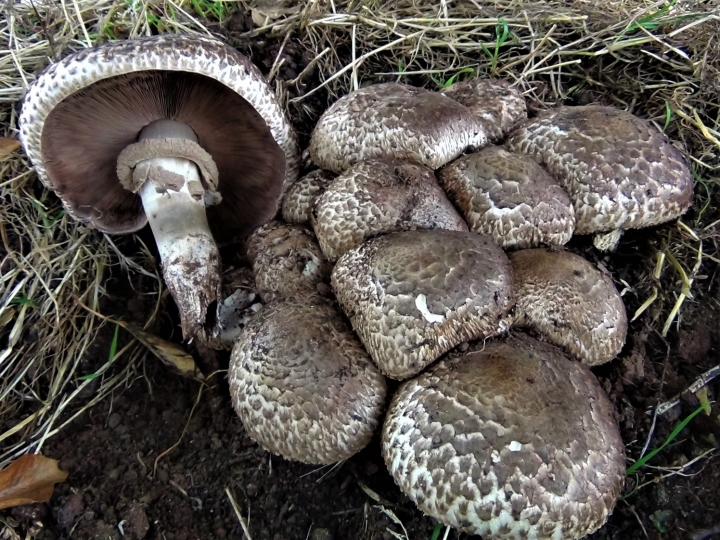
















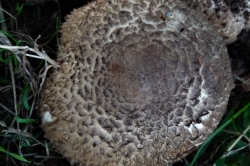
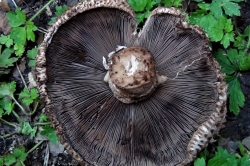
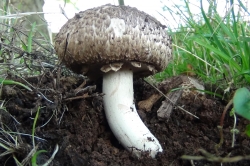
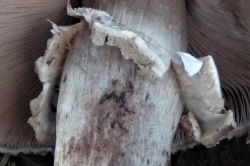
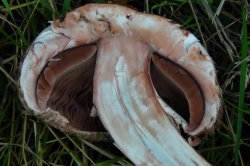
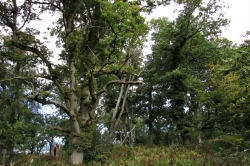
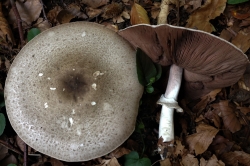





10 comments for Medusa Mushroom
I love your mushroom guide. it really helps, your description is thorough.
Thank you
I have some medusa type mushrooms. But I also have some confusions?? How can I send a picture of mushrooms?? Can you plz reply this comment???
You can send photos for identification to [email protected]. Please ensure you send clear photos including the cap, gills and stem for mushrooms and leaves, flowers, buds, pods and a photo of the entire plant. Any additional info can help with the ID, like smells, location and size.
Hola amigos soy de Costa Rica y encontré lo que creo son Medusa mushrooms… Me gustaría poder enviar una Foto a ver si me ayudan con la identificación..
Puede enviar fotos a [email protected].
Seems very similar to the Prince?
The Medusa Mushroom tends to grow in clusters with the stems meeting at ground level and smells of mushroom, the Prince is bigger and can be found in groups or rings but not often clustered together and smells of almond.
Thanks that’s helpful re the stems, I’m quite sure it’s the Prince I’ve found. I don’t have a sense of smell so have to rely heavily on other ID factors.
got a big question what do you call the big round wild mushrooms that are purple on the bottom and you you normally find them in cow dung early in the mornings late and evening what is the name of that mushroom thank you we’re appreciating response
We can only identify mushrooms with photos, descriptions are not accurate enough. If you can send us photos of the cap, gills, stem and one in situ, we’ll see if we can ID them for you. Send them to http://[email protected]